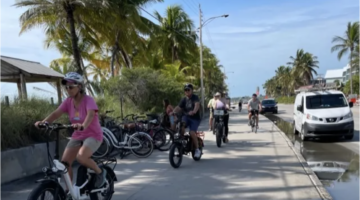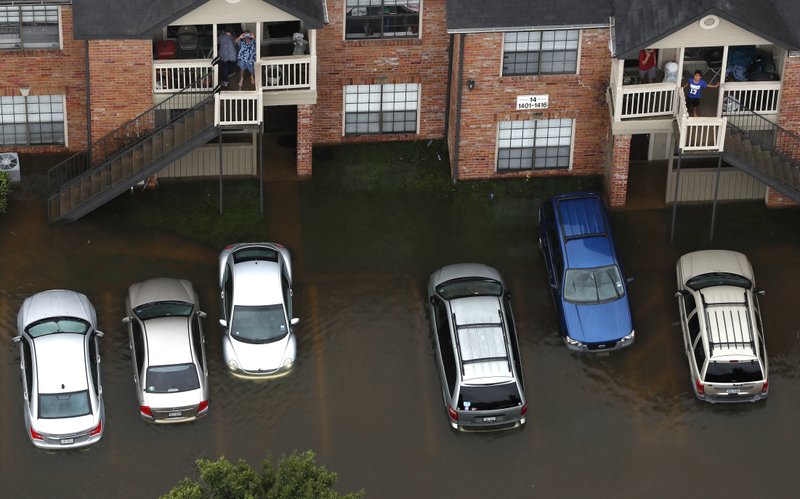In hurricanes’ aftermath, technology eases return to school
Smartphone exchanges, social media, messaging apps and websites rendered students and their teachers at once disconnected and connected in the aftermath of hurricanes Harvey and Irma.
Now, as the hardest-hit schools reopen, advocates of technology that has been growing ever more present in American classrooms say it will only become more important in aiding students scattered by the storms. This recovery, administrators say, has potential to demonstrate how much instruction can carry on outside school walls amid future natural disasters and other disruptions.
“Oh, it was wonderful,” said Gay Foust, who said emailed and texted materials from Houston teacher Kristen McClintock helped Foust’s daughter, who has autism, cope with the disruption of having to stay at a friend’s home when their house flooded during Harvey.
“We’re not in Miss McClintock’s classroom, we’re not in school, and yet she was able to reach out and check on all of her students and offer any kind of help, assistance,” Gay Foust said.
Florida’s Orange County Public Schools distributed about 75,000 laptops to middle and high school students and teachers earlier this year. The idea even in fair weather is to personalize learning and boost engagement and achievement by providing students with unlimited access to their textbooks and other materials, schedules and assignments.
As schools prepared to reopen after Hurricane Irma, district officials were eager to assess how the devices fared in the students’ care after advising them through social media to charge and then unplug them and seal them in plastic bags. Many teachers posted assignments before school was canceled that gave students a chance to get ahead, and college-bound students could continue preparing for the SATs.
“This is really our chance to make sure all of our systems are working the way we want them to,” said Mariel Milano, director for digital curriculum.
One benefit when disasters strike is there are fewer textbooks to get soggy or wash away in a flood. But Hurricane Maria offered a reminder that even technology has its limitations. Authorities predict schools in Puerto Rico could be without the electricity necessary to power electronics for many of the U.S. territory’s 350,000 students for months.
The Orange County district, like others, has strict rules against penalizing students who lack access to electricity or the internet outside of school, even in the best of weather, Milano said.
In Florida, where all 2.8 million students missed school for at least two days because of Irma, Gov. Rick Scott last month said the state’s existing virtual public school would provide remote access and materials to those who are still displaced, as well as digital replacements for resources brick-and-mortar buildings may have lost. With the hardest-hit districts only beginning to reopen, it’s unknown how many students will enroll.
In the Houston area, too, many of the 1.4 million students affected by Harvey may find themselves taking virtual field trips and conducting online science experiments using technology adopted by many schools in response to budget cuts.
While schools were still closed in the Cypress-Fairbanks Independent School District, it posted a three-page list of educational websites for students at every grade level to access as constructive time-fillers.
“So much of what they have been doing for years is all online, and they’re just used to doing it that way,” said Nicole Ray, a district spokeswoman.
The disasters, which could leave buildings shuttered or drive away teachers, are also seen as openings to expand “virtual teaching” — services that have teachers provide instruction remotely by video conference.
Orange County has been looking into using the videoconferencing program Safari Montage Live to let students unable to make it back to town right away join their classrooms remotely. The program is being piloted now for a class being “co-taught” by two teachers in different buildings.
“We want schools to be successful when students return,” Milano said. “We want connectivity to be happening in every classroom and we want there to be that seamless uninterrupted period of learning.”
[livemarket market_name="KONK Life LiveMarket" limit=3 category=“” show_signup=0 show_more=0]





No Comment